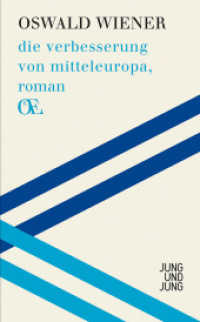- ホーム
- > 洋書
- > 英文書
- > Nature / Ecology
Full Description
These volumes, Cytolytic Lymphocytes and Complement: Effectors of the Immune System, originate from the realization that pathways of recognition and killings of foreign targets follow similar routes in the humoral and cellular part of the immune system. In particular, the homology of immunoglobins with the T-cell-MHC-antigen receptor at the beginning of the recognition sequence and the homology of complement component C9 with lymphocyte perforin 1 (P1) as pore formers at the end of the effector sequence are striking examples.
Contents
VOLUME I: Section 1.A: Recognition - Complement Chapter 1 C1 Structure and Antibody Recognition Chapter 2 Activation of C1 and the Classical Pathway of Complement Chapter 3 Initiation and Activation of the Alternative Pathway of Complement Chapter 4 Decay Accelerating Factor and the Defect of Paroxysmal Nocturnal Hemoglobinuria Section 1.B: Recognition - Killer Lymphocytes Chapter 5 T Cell Specificity and the T Cell Receptor a, P, and y Chains Chapter 6 Structure and Function of a Family of Leukocyte Adhesion Molecules (LEU-CAM) Involved in T Cell Killing and Complement Mediated Phagocytosis Chapter 7 The Role of Accessory Molecules in T Cell Recognition Chapter 8 Toward Understanding Target Binding and Lysis by Natural Killer Cells Chapter 9 The Homology between Specific- and Nonspecific-Lectin or Oxidation Dependent CTLI Target Interactions Section 1I.A: Cytolytic Mechanism - Complement Chapter 10 Assembly and Structure of the Membrane Attack (MAC) of Complement Chapter 11 Structure and Function of C9 and Poly C9 Chapter 12 Pore Size of Lesions Induced by Complement on Red Cell Membranes and Its Relation to C5b-8, C5b-9, and Poly C9 Chapter 13 Pore Size and Functional Properties of Defined MAC and Poly C9 Complexes: Reconstitution into Model Lipid Membranes Chapter 14 Mechanisms of the Cellular Defense Response of Nucleated Cells to Membrane Attack by Complement Index








